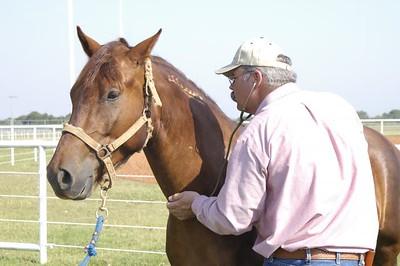BLM suspending adoptions, public visits to Litchfield corrals
Organization:
BLM Office:
Media Contact:
SUSANVILLE, Calif. – The Bureau of Land Management is suspending public visits and adoptions from its wild horse and burro corrals in Litchfield, Calif., due to the presence of Streptococcus equi, or strangles, a contagious bacterial infection affecting a small number of horses at the facility.
The facility will be temporarily closed to the public for an estimated 30 days, and no animals will be accepted into the facility or released for adoptions or sales until the infections subside and no additional cases are detected.
“This disease is highly contagious among horses,” said Emily Ryan, manager of the BLM Eagle Lake Field Office which oversees the corrals. “Our priority is the health of the animals. Because this type of infection is so easily spread, we need to close the facility to the public to prevent people accidently spreading the infection to their own horses after visiting our corrals.”
Affected horses will be isolated in a large holding area at the corrals until the disease runs its course. Corral staff will limit movement of animals inside the multi-pen facility and will be consulting closely with a veterinarian in caring for the horses and determining when it is safe to reopen the corrals. Daily care and feeding of the horses and burros in the corrals will continue as normal.
Strangles is a bacterial infection of the upper respiratory tract. It presents as nasal discharge, fever and swollen lymph nodes around the throat. In most cases, the disease runs its course in two to four weeks.
The BLM manages about 245 million acres of public land located primarily in 12 western states, including Alaska, on behalf of the American people. The BLM also administers 700 million acres of sub-surface mineral estate throughout the nation. Our mission is to sustain the health, diversity, and productivity of America’s public lands for the use and enjoyment of present and future generations.

